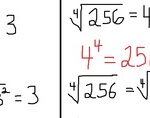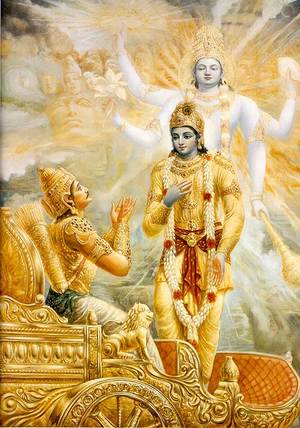What if the number one had a different square root than one? It actually does. I am publishing my finding as an “opinion” because my sort of logic is routinely considered to be anti-scientific and it definitely should be. It it not really a complicated trick just an understanding that mathematics is a human construct with pre set structural assumptions. Of course, who can argue that one divided by one is not one? One times one is one as per:
1 x 1 = 1
It is difficult to imagine any other possible product of that basic multiplication. One single one is just one. One single one out of one yields one. No complaint there.
If you happen to have a scientific calculator, a one can have an unlimited number of zeros following it or can have a decimal point ahead of it. 0.1 is ten percent of one and 100 is one hundred times one. This notation is true of any integer.
Skipping to other integers we know these facts are true:
2 x 2 = 4 and 0.2 x 0.2 = 0.0004
3 x 3 = 9 and 30 x 30 = 900
4 x 4 = 16 and 400 x.0004 = 1.6
5 x 5 = 25 and .005 x 5000 = 250
notice how the expected integer is rendered with decimal point changes as the same integer in the integer directly squared.
One more example :
7 x 7 = 49 and .007 x .00007 = 0.00000049
Thus the basic integer remains intact.
but you say 1 x 1 = 1 and .001 x 0.1 = 0.0001
To find an alternative square root of one I needed to make some odd new assumptions on a tentative basis as per these:
The square root of 0.1 = 0.316227766 approximately
1 is almost equal to 0.99999999999999999999999999999999999999999999999999
0.316227766 x 0.316227766 = 0.10000000000
and
0.316227766 x 3.16227766 = 1.0
remember that
0.7 x 7.0 = 4.90 where the integer stays solid as per 7 x 7 = 49 !
Did you miss the proof?
We can redefine 31622776 as number U.
just as 7 x 7 = 49, U x U = 1 or 0.999999999999999999999999999999999999999
We are dealing with the integer. We have made a not so round looking number look round by giving it a new symbol as the letter “U”.
So the number one as an integer without any necessary decimal place associated with it does have a integer square root that is not one. It is a funny looking number.
A more complicated way to derive the same thing is to say 1 x 1 = .1 x 10
which in terms of the “U” square root of one is the same as :
1 x 1 = 0.316227766 x 3.16227766 = 1.00000 Try it on your calculator if you don’t believe it!
Why is this so? The explanation is that nothing in nature yet known is so atomic that it is precisely one. If you want to observer a single minute particle you end up needing to influence it in some manner just to detect it. If you count atoms as being one each you soon may find them sharing electrons. Even electrons do not necessarily seem to be absolutely paradigms of one because then to have varying energy levels even if the electric repulsive charge is always nearly the same. An electron on the exterior of an atom may be one that can be shared by other atoms where as the internal ones are more durable in their atomic position as atomic singularity components. Often what may seem to be one really is not. 316227766 is actually an integer that seems different than integers with shorter notations. The relationships are exactly the same as calling it U and noting that:
2 x 2 = 4 and 0.2 x 2 = 0.4
or
U x U = 1 as 0.000U x U = 0.0001
Therefore the square root of 1 is U but only as an integer square root and not as an absolute square root. This can be fixed without any slight of hand and some more complicated math work.
as going back to the example of 2 above one notes that 0.4 is a tenth of 4
which leads to equation: U X 0.U = 0.U X U = 1
The actual square root of one is a tenth of 3.16227766 times itself which is one but is not one because it is really the integer U.
If you think this is awful wait till you see what I have done with prime numbers. Before figuring out this stupid square root problem I already found that prime numbers have regular fractional integers whose regularity suggests that there really may be no such thing as a prime number. Not necessarily so once new symbols are given to the regular occurring fractions.
So I am completely out of my head to think that there need to be more basic cardinal number integers than 1 though 9 ? There was a time when the concept of Zero was not really accepted or understood by the best of the world’s mathematicians in those ancient time. zero is still a unique concept and yes I have challenged it as well. 1 x 0 = 0 because one nothing is nothing right? Then again there is just one big empty space shared by everything in the entire universe correct? Maybe not! I developed a proof that slightly redefines the nature of zero as observed in nature to the effect that we have observed nothing to concoct a different manner of mathematic interpretation. The big question is is 1 divided by zero is zero or something else. There can be a set of say 7 nothings and 7 nothings is just nothing as logic says it or we can have seven atoms that define the empty space of atomic influence and in which case we do have 7 nothings that never do become one big nothing and then there is quantum mechanics and its more absurd mysteries. Some of those mysteries are instantly resolved once you realize that the numbers one and zero are hardly as simply defined as they are in basic mathematics. Almost instantly. Units of nothing seems like an absurd concept until nature appears to support the notion The space encapsulated between the outer electron of an atom and its central nucleus is an astoundingly large volume in comparison to the nature of the nucleus. That space only exists in the metrics of the physical reality and no atom can really exist without it presumably even at absolute zero temperature. It might turn out that galaxies also define the existence of space . Einstein hints at the concept that time is a dimension and not empty space. Space is seen to be warped by time and other facts in Einstein’s relativistic universe. That hints at zero not having the assumed properties that mathematicians seem so certain about. The interesting thing about space and empty space is that it there is plenty of evidence that it does not necessarily fill up and does not become necessarily uniform. Space is even seen to be lumpy in nature. Zero has physical aspects. This is why the construct of mathematics can use certain qualified remodeling. There are several different ways to transform zero to reflect what it is in the real physical universe because not only does mater define space it may actually create it.
Clearly I am completely crazy because I am certain that one divided by zero is 1 not zero. Email me if you want that proof and forget it if you just want to tell me how dumb I am (The clue is that is that any number divided by zero should be itself and not nothing because if empty space exists it is apparently large enough to envelop any object of any size or proportions because empty space extends beyond any local confines defined by objects in space. No mathematician will agree with me. I am wrong by definition. Anything divided by zero is thus necessarily the thing that is not zero. Empty space does not consume a positive number the way a positive number is canceled out by a negative number. The proof gets much more complicated and it necessarily is true if the mathematics is to be a natural science and not just a contrived construction of the mind as some sort of game. The surprising thing is that zero times anything could even be one of anything, the one of anything. That yields a new strange math. Adding anything to nothing yields the anything but multiplying is supposed to yield nothing by definition. there is only one big nothing and this is it.




